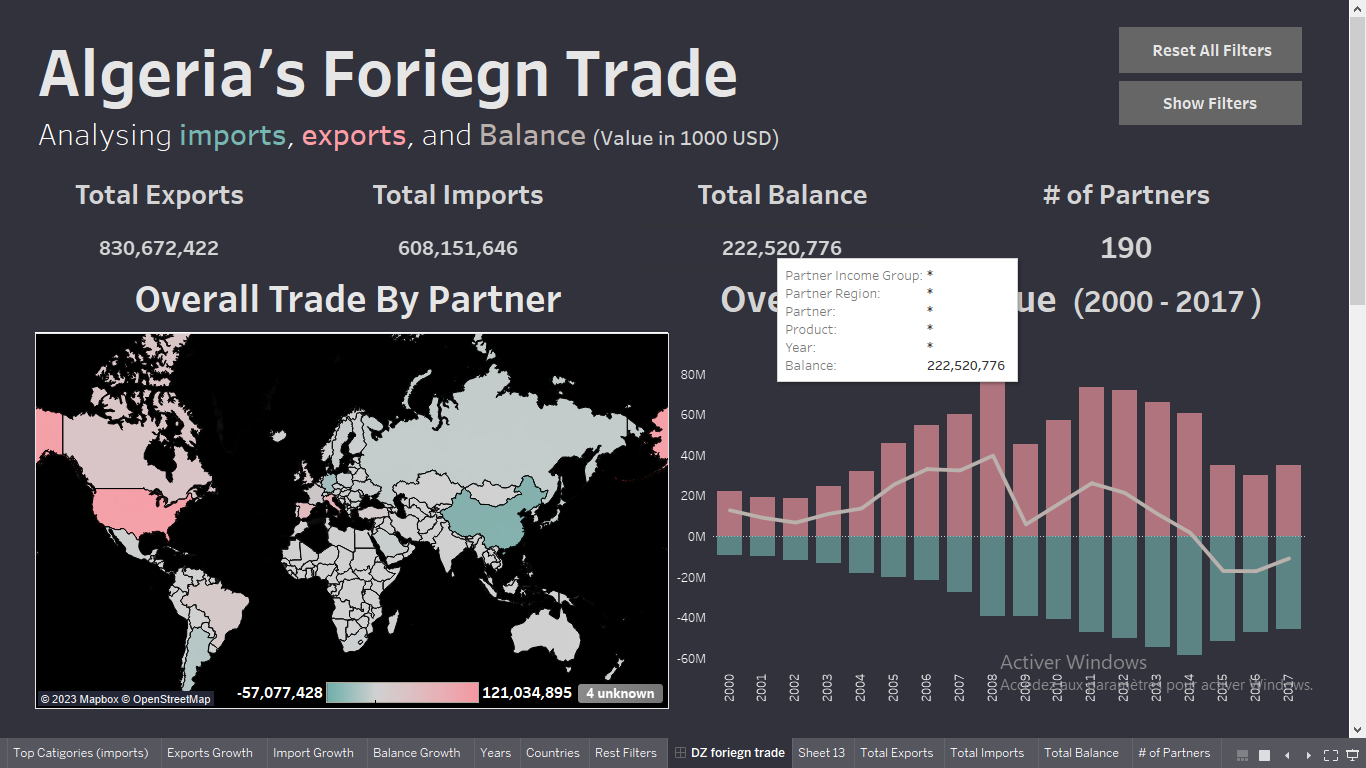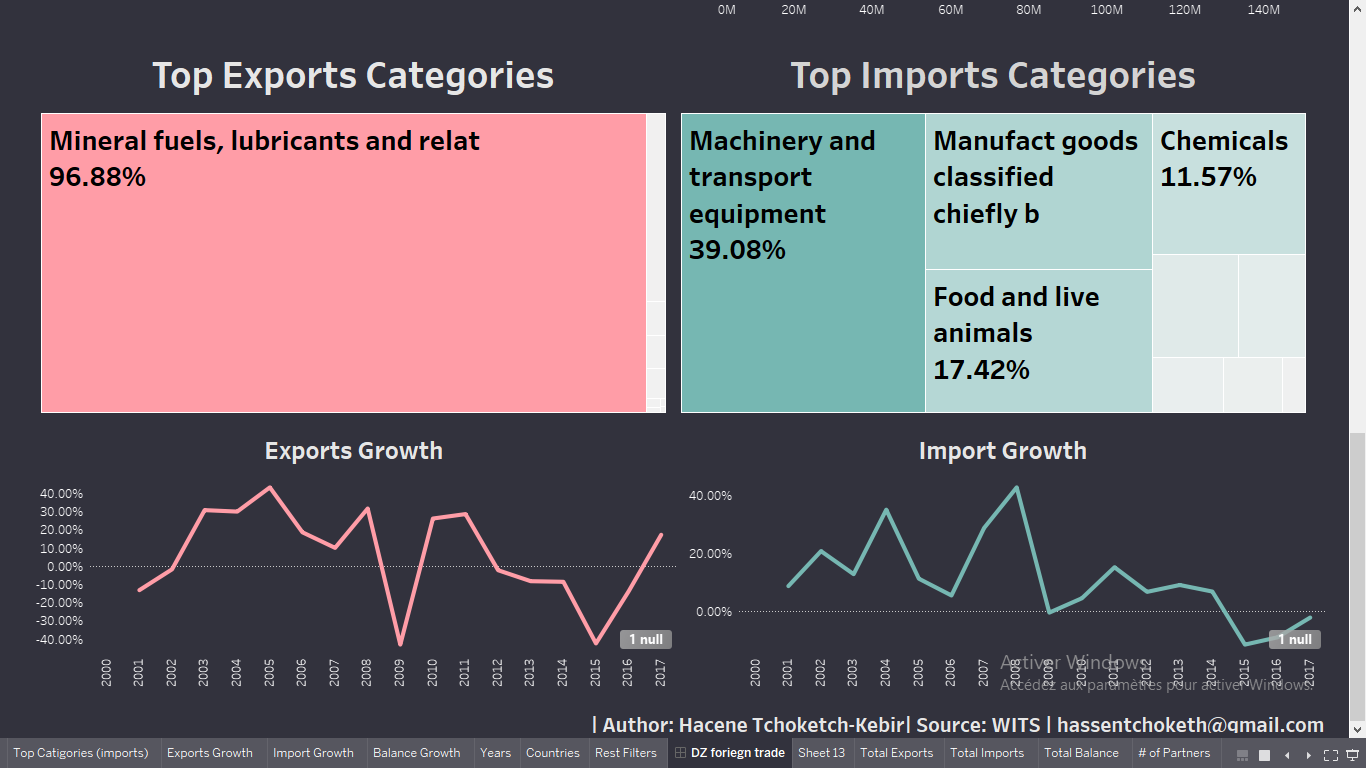Algeria's Foreign Trade Analysis 2000-2017
Python | Tableau |Numpy|Pandas
Problem Statement
Foreign trade is a crucial economic indicator for any nation, as it reflects a country's engagement with the global market and its economic health. Algeria, as a developing economy, has experienced significant fluctuations in its foreign trade patterns over the years. Understanding these patterns is vital for policymakers, economists, and business stakeholders to make informed decisions and drive sustainable economic growth.
Objective
The primary objective of this project is to create a comprehensive dashboard that provides deep insights into Algeria's foreign trade dynamics from 2000 to 2017. This dashboard will offer a user-friendly interface with eight key visualizations, focusing on trade by partner countries, trade evolution over time, import and export balances, trade by product categories, and top trading partners.
Significance
This project is significant for several reasons:
Policy Insights: It will provide policymakers with data-driven insights into the strengths and weaknesses of Algeria's foreign trade relationships, helping them formulate effective trade policies.
Economic Planning: Businesses can use the dashboard to identify potential trading partners and market opportunities, aiding strategic planning.
Academic Research: Researchers and analysts can utilize the data to conduct in-depth studies on Algeria's trade dynamics, contributing to academic knowledge.
Methodology
The project involved data preprocessing using Python and visualization using Tableau. We used historical trade data, partner country information, and trade category classifications to construct the dashboard.
Data
The data used in this project are sourced from the World Integrated Trade Solution (WITS) of the World Bank. WITS provides comprehensive and reliable information on Algeria's foreign trade, including import and export volumes, partner countries, and trade categories. Leveraging the WITS dataset ensures the quality and credibility of the data, serving as the foundation for our analysis.
Results


